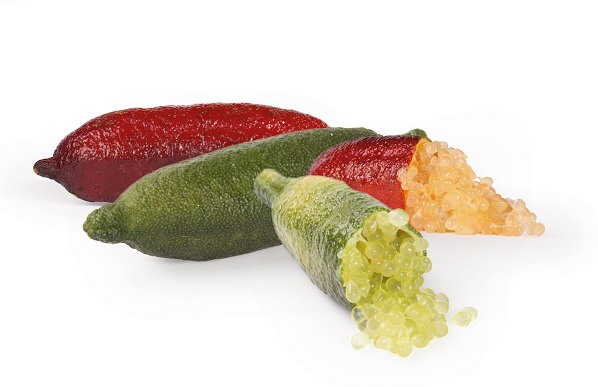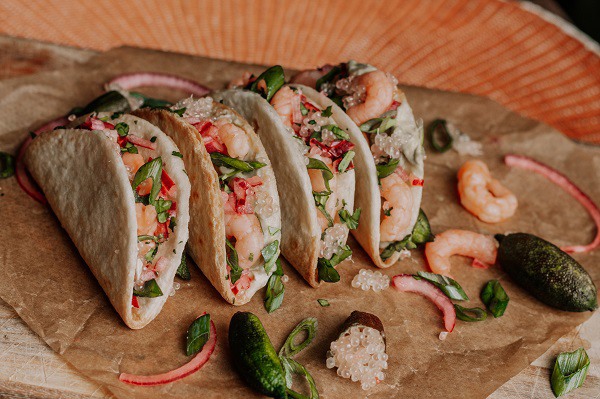"This is a great, up-and-coming product," says Bud Hollands' Jean Marc Eikelenboom (Purchase and Sales) about finger limes. This Dutch company imports exotic fruit and vegetables. Finger limes are described as 'citrus caviar'. Filled with juicy 'pearls', they look a little like pickles. They taste like a lemon/lime/grapefruit mix. "You can use finger limes in anything in which you'd use a lemon flavor. They don't have that subtle lemon flavor."

"These fruits are slightly sharper and fresh-tasting." People consider finger limes as an exotic substitute for lemon or lime in things like dessert and cocktails. Or in seafood dishes. Growers cultivate finger limes in different countries, where they all look slightly different. Originally from Australia, they are, as the name suggests, the size of a large finger. When Bud Holland started importing finger limes some ten years ago, they got these exotics from there.
Citrus caviar
Airfreight costs have forced the company to source this 'citrus caviar' from Guatemala. These are slightly smaller. They also get them from Morocco, where they are a little cheaper. Red finger limes - now only grown in Australia - are gaining popularity. And are expected from Guatemala and Morocco next year too.

Finger limes are also grown in the U.S and are smaller there too. And in the Mediterranean area, in Spain and Italy. In Israel, it resembles a cucumber. From whatever origin, this exclusive fruit remains fairly pricey. "That's why you don't find finger limes in supermarkets," Jean Marc points out. "In the Netherlands, the general public is too unfamiliar with it. And it's fairly expensive."
Becoming better known
He has good expectations for finger limes. "Given the price, it will never become a commodity. But this product is going to grow. It's just a matter of time. As they become better known, sales will naturally climb." Most of the fruit finds its way to restaurants and catering-related companies, mainly throughout Europe. Volumes are evenly distributed year-round.
That differs from other types of exotic fruits and vegetables. These are especially sought after around the holidays. "At Christmas, restaurants as well as people at home, want their dishes to look nicer, with special products. People all over Europe spend more money around this time. And they're prepared to use unusual fruits," concludes Jean Marc.
Jean Marc Eikelenboom
J.M.Eikelenboom@bud.nl
 Bud Holland
Bud Holland
Transportweg 67
2676 LM Maasdijk
+31 (0)174 535353
exotics@bud.nl
www.bud.nl

